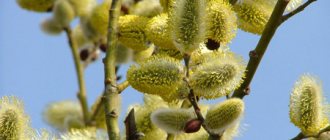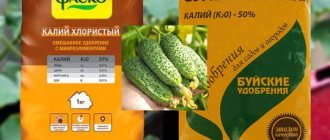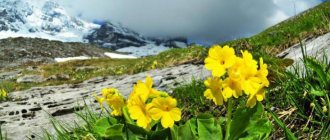Characteristics of the flower
The natural habitat for the flower is the shady forests of Eurasia and North America. The species can be found on the slopes of the Alps and on the Mediterranean coast. The plant prefers moist and shady places. It begins to bloom in early spring and delights with colors until mid-summer. During this period, flowers manage to renew their petals several times (every 3–8 weeks).
This is a perennial (sometimes annual) plant, not exceeding 30–50 cm. The peduncle is decorated with a dense umbrella with corollas of five or more petals of the most varied colors with sharp or rounded tips. The diameter is 6–8 cm. The core is predominantly yellow. The leaves are sessile or petiolate, oval or oblong. They have solid or finely toothed edges, covered with small, soft fibers and clearly defined veins.
Variety varieties
Primrose is a representative of all kinds of colors. However, not all variety series (a group of one plant differing in the shade of its buds) take root in Russia. Only a few of them can boast of high decorative properties and longevity in the middle climate.
"Rosanna F1" is the most popular representative of the group of terry varieties. This species is characterized by a compact bush with rather dense foliage. The height of the bush is not too large - only 15 cm. It, in turn, is covered with a cap of multi-petal roses.
The same series includes carriers of other shades, mainly red, yellow, pink, apricot, and white. In this regard, each of them received an individual name: “White Roseanne”, “Apricot Roseanne”, “Red Roseanne”, “Pink Roseanne”.
By their nature, they are considered perennials and are characterized by rapid growth and development when grown at home or in the garden.
Ideal conditions are partial shade, as well as moist, nutritious, periodically fed soil.
The most popular types and varieties with photos
There are a large number of varieties. The most popular among them are:
Primrose Spring
It begins to bloom in April and ends flowering at the end of May. The petals are most often yellow, but there are also two-colored ones.
Primula stemless
The same applies to early varieties. The leaves are small and oval in shape. The flowers are large, with wide-open heart-shaped petals. The most popular variety is Potsdam Giants.
Large Checkers
An early species, blooms until the end of May or beginning of June. Height - 35 cm. Actively used in medicine.
Serrated
Tall variety (up to 50 cm) with large oblong, finely toothed, wrinkled leaves. The flowers are small, collected in dense spherical inflorescences.
Siberian
Blooms in mid-May. Height - 30 cm. The stem is thin, covered with fibers. The leaves are basal, pubescent, the petals have an elongated heart-shaped shape.
Terry
This species blooms from early spring to mid-summer. It also tends to re-bloom in September and October. It is distinguished by wavy petals and large leaves.
Rosanna Apricotova
Low-growing variety (15 cm). The flowers resemble small rosebuds. Blooms in April - May.
High Colossea
Despite the name, its height does not exceed 25 cm. It blooms with large flowers of various colors, including two-color ones.
Japanese
Characterized by a developed basal rosette. The species has a tall thick stem, bright leaves with jagged ends and flowers with a dark core. Plant height is about 20 cm.
Carnival
Hybrid with unusual coloring. Begins to bloom in mid-spring. Distinctive features are a two-color core and a height of about 20 cm.
Big Ben
It begins to bloom in mid-spring and ends in July. The plant has large flowers, mostly pink, a tall stem and oblong glossy leaves. Height about 35 cm.
Softish
At home, it begins to bloom in late autumn and ends in mid-spring. It is distinguished by the edging along the edges of the petals on large flowers with a diameter of 8 cm. The height of the plant is 45 cm.
Selecta (Giant)
Blooms from April to July. Plant height is 30 cm. The flowers are large with large petals of various colors.
Elatior (Primula Tall)
Blooms from April to June. Height - 40 cm. The flowers are predominantly yellow, oblong, with sharp petals.
Blue Jeans
This species grows well not only in the shade, but also in sunny areas. It begins to bloom in early spring and continues to please the eye until June. The height of the bush is 25 cm. The flowers are large with blue petals with blue veins. The core is large, bright yellow.
Obkonika
Height - 30–50 cm. Flowers are large (8 cm). The stem is long, the leaves are large and velvety.
Polyanthus
Belongs to large species. The height of the bush can reach 60 cm. The flowers are 8 cm. The round petals, tightly adjacent to each other, have a white edge. The leaves are oval, pointed at the ends.
Florinda
The largest variety. There are specimens reaching 80 cm. On a high peduncle there are many bell-shaped flowers. The stem is thick and straight. The leaves are large and wrinkled.
Popular series of terry primroses
Despite the abundance of varieties, several variety series - groups represented by identical plants, but with different flower colors - have taken root in the middle zone and demonstrate good viability.
- The most popular terry primrose Rosanna F1. It forms dense compact bushes up to 15 cm high, crowned with a cap of multi-petaled flowers. The series includes 5 colors - red, pink, yellow, apricot and white. A true perennial, grows quickly, loves partial shade, moist and nutritious soil.
- The American hydride P. stemless Primlet F1 is exotically beautiful and unusual, but more difficult to grow in garden conditions. It was bred as a biennial; without a radical renewal of the bush, it quickly loses its decorative effect. They like to use it for forcing, since it is an extremely early plant and blooms in the first year of the growing season.
- Unlike Primlet, the double primrose of the Paloma F1 series can grow in one place for up to 7 years. The seeds are planted before winter or early spring; it blooms in the second year, lasting up to 50 days. Mixes of different colors are sold in stores.
- The terry primrose Rosie variety series is a new selection, characterized by early, long-lasting flowering, flower splendor, and versatility. It is equally good in an open flower bed, in a pot, or in an outdoor container.
Note! P. auricula or auricula has many double varieties - Jupp, Xaver, Max, Suzanne, Crimson Glow. It is generally accepted that these are capricious plants, but multi-petalled auricula are much better adapted to open ground and cold climates than “eye-shaped” show specimens covered with a powdery coating.
Growing methods
Primrose from seeds at home is a quick way to grow ornamental bushes with bright flowers. For this method, the time of year does not matter much. But a prerequisite is the presence of a warm, well-ventilated room with a temperature not lower than +17°C.
When sowing in spring, the seeds germinate on the 25th day, when sowing in autumn - after four to five months. You can use planting material that was previously collected by the gardener himself, or buy high-quality ready-made material.
Primrose – photo
Primrose will give you a boost of energy and good mood along with the first warming of spring. Just look how beautiful it is during flowering!
Favorable periods for sowing
Sowing primrose from seeds begins in February and ends in October.
- In the Moscow region, seeds begin to be sown in early March.
- In the Urals - from mid-March.
- In Siberia - from the end of March or the beginning of April.
- In the southern regions - at the end of winter.
According to the lunar calendar, sowing in 2021 should be done on the following days:
- March - 8–13, 17, 23–25.
- April - 7–13, 16, 22–24.
- May - 8–14, 17, 23–26.
- June - 5–11, 15, 20–22.
- July - 4–10, 14, 19–21.
- August - 3–9, 13, 18–20.
- September - 2–8, 12, 17–19, 30.
- October - 4–7, 15–18.
Advantages and disadvantages
This group of primroses has its advantages and disadvantages. The following parameters are highlighted as advantages.
- High decorative properties include increased terry. The diameter of multi-petal roses is about 5 cm, flower caps are from 10 to 15 cm. In general, the plant is quite compact, even, with lush foliage of a dark green hue. By the way, even after flowering the leaves look attractive, especially those of Primrose auricula.
- The flowering period occurs in April, May and early June. The average duration is about 2-3 months. Some varieties of the variety are able to bloom twice a season, for example in September or October. In this case, it all depends on care and maintenance.
- The garden plant shows good results in the garden or adjacent areas, as well as indoors - on the windowsill. Thus, experienced flower growers claim that after the autumn transfer to the container, the flowering of the crop occurs in mid-February - early March.
- Excellent for forcing from seeds in early spring - flowering is observed already in the first growing season.
Unfortunately, terry primrose also has disadvantages.
- Without proper care, it is impossible to achieve bright blooming buds in the garden or at home. It is important to use exclusively fertile soil and regular watering.
- Average winter hardiness - the plant copes with temperatures of -23-25 degrees. These figures are quite low for the spring type of primroses. Experienced gardeners recommend providing shelter for the plantings during the winter or moving them into containers.
- From a botanical point of view, terry primroses are perennials, but the name “perennials” is more suitable for them. Bushes are very demanding in terms of replanting, rejuvenation and other similar procedures to maintain full growth and health. For example, the hybrid "Primlet F1" was bred as a biennial.
- The group of terry varieties is not capable of producing seeds. For this reason, reproduction is possible only by vegetative means.
Growing from Seeds: Step-by-Step Instructions
Seeds of some species require stratification (artificial awakening) . You can learn about the need for such actions from the instructions on the packaging with planting material. The procedure is easy to carry out at home. To do this, you need to place the seeds in the refrigerator and leave them there for 14–30 days, setting the temperature to +5°C.
When growing flowers from seeds at home, you should follow these step-by-step instructions:
- Prepare containers for disembarkation. This could be a box, a plastic container or peat cups.
- Make holes in the container to allow excess water to drain out.
- Prepare the soil: peat and sand in equal parts. You can buy ready-made soil in the store.
- Lightly moisten the soil.
- Sow seeds at the rate of 5 seeds per centimeter.
- Water again.
- Cover with film.
- When seedlings appear (after about 25 days), carry out a pick: when the first two leaves appear, transplant the plant into a larger container.
When sowing in autumn, the following agrotechnical recommendations must be observed:
- After sowing and covering the container with film, the box should be placed in a freezer with a temperature of -10°C.
- Get the container in a month.
- Place in a dark place and make sure the soil does not dry out.
- Maintain room temperature +17°C.
In autumn, the first crops appear after about five months.
Terry primrose: home care, planting, propagation
One of the most favorite flowers of many gardeners is the terry primrose. This is a beautiful and special variety of primrose. Caring for and growing from seeds at home is very simple. However, it has features that should be taken into account so that the flower always pleases the eye with its beauty.
Description of the variety
The pinnacle of garden flower selection is considered to be increasing the number of petals (doubleness) of the corolla. A clear confirmation of this is the terry primrose, which has transformed from modest yellow “keys” into the queen of the spring garden. Miniature bouquets, reminiscent of border spray roses, fascinate with their grace and rich palette of colors.
This culture appeared relatively recently and differs from other primroses in its high decorativeness and duration of flowering. There is no equal to it in beauty, in the richness of color and doubleness of flowers, in the decorativeness of leaves!
There are no competitors to stemless terry primroses in terms of flowering duration - they are able to bloom for three or even four months per season! And it will continue to bloom until significant frosts of -7 degrees occur. Such a miracle was created by German flower growers in the selection of primroses!
The terry stemless primrose has a lot of undoubted “advantages”, but there are also “disadvantages” - not in every garden and not in every place this plant develops and blooms well.
Let's talk about the pros first.
- Terry varieties have increased decorative properties. Multi-petal roses reach a diameter of 4–5 cm, and the flower cap is 10–15 cm. The dimensions of the plant itself are compact, even, the foliage retains an attractive appearance after flowering (especially in auricles).
- The flowering period for most hybrids is 2–3 months - it begins in April, continues throughout May, and extends into June. Many varieties, with intensive care, tend to re-bloom in September - October; this is a real godsend for the late autumn garden.
- They can be grown not only in the garden, but also indoors. After autumn transfer to a pot, they bloom in February - March.
- They lend themselves well to early spring forcing from seeds and bloom in the first year of the growing season.
Terry primrose does not like sunny places and dense, poor soil; it is also sensitive to drought. To avoid drying out the soil, it is advisable to mulch the primrose bushes in the spring for better moisture conservation.
But terry primroses also have disadvantages.
- They require more careful care, and to reach their full potential, fertile soil and regular watering.
- Winter hardiness varies in the range of -23–25⁰ C, which is lower compared to ordinary spring primroses. It is advisable to cover varietal plantings for the winter or transfer them to a container.
- Although terry primroses, according to cultivation technology, are classified as perennials, they are rather young plants and require frequent replanting and rejuvenation of the bush. Some hybrids, such as Primlet F1, were originally bred as biennials.
Popular varieties
All of them are hybrids, that is, they are labeled F1.
- Rosanna. Perennial, loves partial shade and nutritious, moist soil. May have white, yellow, orange, pink and red flowers. The bushes with white and yellow bouquets are considered the most resistant and “freeze-resistant”.
- Primlet. Stemless primrose, a hybrid native to America. Biennial - this bush needs to be updated all the time. Blooms in the year of planting.
- Paloma. And this flower can live in one place for up to 7 years. It blooms for up to 50 days, but only in the second year of life. Seeds can be planted both in early spring and before winter. In our stores, Paloma seed packets offer mixes of different shades.
- Rosie. Early flowering variety. It is good to grow it both in a flower bed and on a balcony or windowsill.
Also considered successful varieties are auricles (eared) Crimson Glow, Suzanne, Max, Xaver, Jupp.
Home care
Growing in favorable conditions, terry stemless primroses appear in all their glory. Their leathery leaves grow large and structured, with a beautiful pattern, rich dark green color, and the velvety flowers are elegant and bright, with a brilliant tint. The diameter of double primrose flowers reaches 3-4 cm, and in terms of double size, these flowers are very similar to spray roses.
Terry primrose is responsive to care:
- First of all, on the fertility of the substrate and watering. Not only the size of the corolla and the duration of flowering, but also the shade depends on this. On rich soils the color is deep and rich, on poor soils it is faded.
- The plant is fed for the first time in early spring, preferably with a solution of organic fertilizer. This feeding can be skipped if the bushes have been sprinkled with humus since the fall. Fertilize again by the end of summer. A complete mineral fertilizer for flowers, for example, Fertik, Kemira, is suitable.
Watering
Terry stemless primroses like to drink plenty of water during the period of growth and flowering, so in hot weather I do not spare water and time for watering for them. But in the cold season, squat bushes of terry primroses should not be watered, as their lower leaves begin to rot due to poor ventilation.
Maximum watering is given in May - June. During the dormant period (July - August), make sure that the soil does not dry out, but do not water it abundantly. Regular moistening is resumed when the plant begins to grow again - from the end of August.
Propagation by seeds
Terry stemless primroses are more difficult to propagate by seed than other species. Terry primrose seeds are much more expensive, and there are only 5 pieces in a bag (some seeds may not germinate).
Stock up on the seeds of these wonderful plants now, in the fall, because it is recommended to sow terry primroses as early as possible.
- The surface of the wet soil in the pot needs to be leveled and compacted.
- Scatter primrose seeds over the surface of the soil.
- Cover the crops with film or glass and place the pot with seeds for stratification - in the refrigerator for a month, periodically checking the soil moisture. At the same time, periodically ventilate the crops and shake off the condensation that forms on the film.
- After a month, remove the pot of primrose seeds from the refrigerator and place it in a warm, bright place, out of direct sunlight.
- Primrose seedlings will soon begin to appear.
There is no need to rush and remove the film from the crops.
It is necessary to ventilate the crops and not allow condensation to accumulate. When the small primroses get stronger, forming a rosette of several leaves, only then can you remove the film and transplant the plants to a permanent place - preferably in the shade or partial shade.
Pick up terry primrose seedlings according to a 15x15cm pattern, and plant the grown bushes in a permanent place in the garden.
Reproduction by division
How to properly divide a primrose bush for propagation:
- For propagation, bushes are usually divided in the fall. The uterine bush is completely dug out and divided into rosettes with a knife.
- Then plant them separately either in open ground or in pots.
- All old leaves are torn off from below, this gives additional growth of new leaves and future flower stalks.
- If there are old flower stalks, they also need to be cut off.
If primroses are planted in the ground, then, in addition to drainage, make light soil and add dry perlite. Perlite gives us airiness in the soil and then the primrose will bloom more abundantly. After planting, it is necessary to water the primrose, but do not flood it under any circumstances.
Overwinters without shelter. You can throw more snow on it, then it will be warmer.
Under no circumstances should you place leaves, straw, pieces of rags, or bags on primrose in winter; if you are afraid of frost, it is better to make a dry shelter, cover it with a bucket or an empty plastic bottle.
In early spring, I open primrose already at the end of February, beginning of March. And then it grows faster and begins to bloom earlier.
It is difficult to compare the duration of flowering with terry primrose, because in some cases its duration is up to four months per season. However, this is only possible with rich, loose soil and the absence of direct sunlight. Under favorable conditions, the strengthened plant develops very well, double inflorescences reach 5 cm in diameter and are very similar to roses.
Source: https://floriums.ru/primula-mahrovaya
Care after transplanting into the ground
After transplanting seedlings into open ground, the plants need proper care.
Tips for growing primrose are:
- Maintaining temperature conditions. The temperature should be +15–20°C.
- Maintaining wet conditions. Humidity should be between 75–80%.
- Regular irrigation. The flower requires both watering and spraying.
- Weeding. Weeds should be removed as they appear.
- Feeding. Organic fertilizers, which contain fluorine, nitrogen and phosphorus, are needed to strengthen the root system, as well as for the growth of buds and increase the immunity of the flower.
- Lighting. The plant needs a bright place, but it must be protected from direct sunlight.
Plant care
- Primrose bushes should be planted in partial shade.
- Choose fertile, light soil. Before planting flowers, it is better to fertilize the flower bed. Many gardeners have noticed: the richer the soil in the flowerbed, the brighter the primrose flowers.
- Feeding. In the fall, the soil can be dug up with humus. If you haven't done this, water the flowers with a solution of organic fertilizer in the spring. The second feeding is carried out at the end of summer (it is this that stimulates the plant to re-bloom). Here you can already use purchased mineral fertilizer (for example, Kemira).
- Primrose will not survive drought, so be prepared to water it often. Terry primrose is watered most from May to June. From July to August, the faded plant enters a dormant period; it also needs moisture, but less. Well, from the end of August, if your bushes begin to become active again, resume frequent watering again.
- From time to time, transplant the bushes to other flower beds, and divide the largest ones. For most varieties, replanting every 3-4 years is suitable.
- When planting adult primroses, make sure that the leaves of the bushes touch each other (close). This will allow the flowerbed soil to better store moisture without drying out until the next watering.
- Most of our varieties overwinter well without shelter. True, if in the fall you cover the ground in which the primrose root is hidden with fallen leaves or nutritious soil, the plant will only be grateful to you.
Moisture combined with cold can kill a plant.
An experienced gardener will tell you more about why garden primroses die and how to save them in this video:











